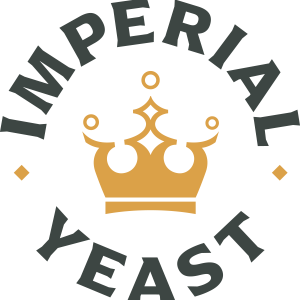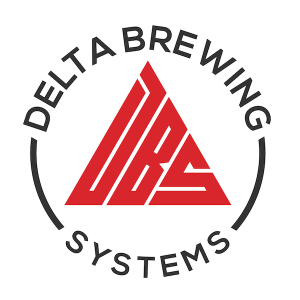Author: Malcolm Frazer
 Brewers who are serious about making the best beer possible know that good brewing water is key, and getting good brewing water often requires adjusting its chemistry with minerals and acid. Shown to effect enzymatic activity during the mash as well as clarity, aroma, and flavor of the finished beer, mash pH is a component most water conscious homebrewers pay attention to. In a recent conversation with Colin Kaminski, co-author of Water: A Comprehensive Guide for Brewer’s and Brewmaster at Downtown Joe’s, the topic turned to the potential impact differing pH levels of the wort during the boil have on things like hop utilization, perception of bitterness quality, and extraction of aromatic compounds.
Brewers who are serious about making the best beer possible know that good brewing water is key, and getting good brewing water often requires adjusting its chemistry with minerals and acid. Shown to effect enzymatic activity during the mash as well as clarity, aroma, and flavor of the finished beer, mash pH is a component most water conscious homebrewers pay attention to. In a recent conversation with Colin Kaminski, co-author of Water: A Comprehensive Guide for Brewer’s and Brewmaster at Downtown Joe’s, the topic turned to the potential impact differing pH levels of the wort during the boil have on things like hop utilization, perception of bitterness quality, and extraction of aromatic compounds.
This isn’t a new idea, though it seems far less focused on by homebrewers than other aspects of water chemistry. In my research, I found many in the brewing world accept a positive correlation exists between boil pH and hop utilization, increases in the former leading to improvements in the latter, and that it also leads to greater extraction of aroma compounds that remain in the finished beer.
Pretty great, right? Simply increase the pH of the wort pre-boil to get killer hop character. Except that’s not all there is to it. As Chris Colby discusses in a 2014 article on Beer & Wine Journal, a higher boil pH is purported to increase the risk tannin extraction from kettle hops, which are known to produce what many describe as a harsh bitterness.
So says the hard science, but what of the practical? Curious whether the average beer taster would be able tell the difference, I designed an xBmt to test it out!
| PURPOSE |
To evaluate the differences between 2 IPAs of the same recipe where one had a boil pH of 5.12 and the other a boil pH of 5.45.
| METHODS |
Much gratitude to Love2Brew for sponsoring this xBmt by hooking me up with a couple MACC IPA kits, a recipe designed by our own Ray Found that I was excited to try. I did make a small change by adding a touch more Magnum at 60 minutes to increase both the bitterness and plant matter in the wort, as these are both components said to be impacted by boil pH.
The night before brewing, I pitched 2 packs of WLP001 California Ale Yeast into a single large starter that would later be split between the two batches.
As my strike water was heating, I weighed and milled my grain with the help of an always willing volunteer.
I chose to perform separate mashes for each kit, both using the batch sparge method, staggering them by about 20 minutes. Thanks to BeerSmith, I hit the same mash temperature for both batches.

Each wort was collected in its own kettle following a 60 minute rest and both were at 5.45 pH. Based on conversations with brewing water experts Martin Brungard, John Palmer, and Colin Kaminski, I opted to adjust only one of the batches using phosphoric acid since it is essentially flavorless and wouldn’t contribute any minerals that might otherwise impact the variable being tested. Adding 2.5 mL of 77% phosphoric acid to the low boil pH wort brought it down to 5.12 pH.

Both batches were then boiled for 60 minutes with hops added per Ray’s recipe.

At the completion of each 60 minute boil, I quickly chilled the wort to my target fermentation temperature.

Hydrometer measurements following each boil confirmed both reached the same 1.066 OG.
I transferred each batch to its own conical fermentor controlled to 66°F/19°C then split the starter evenly between them.

Signs of fermentation were evident the following morning and both batches appeared to proceed similarly. As I usually do, I ramped the temperature a bit a few days into fermentation to ensure complete attenuation. Dry hops were added and left for a few days before I returned to measure FG since fermentation activity had ceased. I was surprised to discover the first observable difference.

This difference remained over multiple hydrometer measurements. Prior to packaging, I also took pH readings of both beers and found, perhaps expectedly, the high boil pH beer has slightly higher pH than the low boil pH sample.

The beers were then cold crashed, fined with gelatin, then kegged. After about a week on gas in my keezer, the beers were carbonated, clear, and ready for evaluation.

| RESULTS |
A total of 42 people participated in this xBmt, each blindly served 1 sample of the lower boil pH beer and 2 samples of the higher boil pH beer in different colored opaque cups then asked to select the unique sample. While 20 tasters (p<0.05) would have had to accurately identify the low boil pH sample as being different in order to reach statistical significance, only 15 (p=0.43) did so, suggesting they were unable to reliably distinguish an IPA made with a 5.12 boil pH from the same IPA with a 5.45 boil pH.
Since the results failed to achieve significance, any correct responses on the triangle test may very well have been by random chance, thereby invalidating any further data collected. However, given the moderate sample size, I thought it’d be interesting to share some of the information gleaned from the comparative analysis completed by only those participants who accurately identified the unique sample. Of the 15 participants who accurately chose the unique sample in the triangle test, 8 reported a preference for the low boil pH sample, 5 liked the high boil pH beer more, and 2 had no preference despite noticing a difference. While some of these tasters seemed to provide descriptions consistent with expectations in follow-up conversations, the level of convergence was not drastic.
My Impressions: When I initially tried these beers directly out of the fermentors, I was certain I detected differences, all of which aligned perfectly with what I knew I should have detected– stronger aroma and more assertive bitterness in the high boil pH beer. Then I laughed at myself– of course I tasted what I expected, I knew what had been done to the beers and exactly what to look for. I slightly preferred the higher boil pH beer as I perceived the bitterness as more assertive yet not overly harsh. The difference maker for me was the hoppier aroma in the high boil pH beer, as achieving that initial burst of hop aroma is often elusive for IPA brewers. As for Ray’s MACC IPA recipe, it was quite nice and well designed, especially the hop bill. I typically make drier IPA, but this was a nice change. With the impression of sweetness without being cloying, likely from the dose of Honey Malt, and heaps of classic American hop character, this is a recipe up any IPA lovers alley and was well received by the xBmt participants.
| DISCUSSION |
The pH scale is logarithmic rather than linear in nature, meaning a difference of 3 pH (10³ H+) is substantially greater than a difference of 1 pH (10 H+). It’s for this reason brewers tend to mind seemingly small variances in pH, for example, the commonly accepted “ideal” mash pH range of 5.2 – 5.6, as this translates to a relatively large ionic difference. The aforementioned range is similar when it comes boil pH, hence the decision to do a comparison between a low of 5.12 pH and a high of 5.45 pH. Despite the seemingly small 0.33 pH difference, which amounts to just over 2 times the H+ ion concentration, I fully expected these beers to be easily distinguishable by a panel of arguably well qualified tasters, the high boil pH sample possessing perhaps more hop character with a harsher bitterness than the low boil pH beer. Curiously, that’s not what happened, tasters could not reliably tell them apart.
During the data collection session, I was amazed as many of the people I would have bet on correctly identifying the unique sample walked away stumped. From early on, it was clear most people struggled on the triangle test. However, comments from a few of the correct respondents following completion of the survey did seem to align quite well with expectations, with descriptions of the high boil pH beer as being “more hoppy” and “biting” while others perceived the low boil pH beer have less bitterness or aroma. Of course, these are commonly used descriptors, and given the results of this xBmt, it’s possible their consistency with what I expected is mere coincidence. Either way, I’ll continue to pay attention to my boil pH and look forward to further investigations on the topic.
Is the pH of your boiling wort something you’ve taken into consideration? Please share your experience in the comments section below!
Support Brülosophy In Style!
All designs are available in various colors and sizes on Amazon!
Follow Brülosophy on:
FACEBOOK | TWITTER | INSTAGRAM
If you enjoy this stuff and feel compelled to support Brulosophy.com, please check out the Support Us page for details on how you can very easily do so. Thanks!














22 thoughts on “exBEERiment | Water Chemistry: Impact Boil pH Has On An American IPA”
bad link on the exbeeriments page. found this post using search.
Meant to write a thanks. Your comment tipped us off to fix it.
Cool experiment. Interesting that the more acidic beer was less attenuated, so in effect tasters couldn’t differentiate between beers differing in two ways.
Nice work.
Yeah, but that is often the case in brewing. Once the variable in inserted it typically will no longer be isolated due to the cascading nature of the entire brewing process. We usually do not try to correct the cascading effect as you can end up like a dog chasing its tail and even inadvertently be inserting even more variables along the way – under and over compensating is another issue.
Another conundrum.
Would love to see you do this with a Hefeweizen. I’ve noticed that by using the same malt/hops/mash schedule but adjusting the pH, the closer I get to ~ 4.6 the longer my beer tastes like a hefeweizen should (IMHO). Mid 5’s gets me a “two-week” hefe, low 5’s about three weeks, and the 4’s about a month. That being said, hefe’s don’t stay around my house longer than 4 weeks.
No IBU analysis?
Not this time. Would need to have someone say they would do it. Shipping fee too. I wouldn’t mind it!
I’m interested in the difference in attenuation. I slightly screwed up my first ever all grain brew. I overdid the acid additions and ended up with a mash pH of 4.6. The mash still worked and I got good conversation but I only got 66% attenuation from US-05.
The other difference was the colour of the beer. My first attempt at it was the palest yellow but when I recently remade it and hit a mash pH of 5.7 it ended up golden bronze.
Is it safe to say that you made mineral adjustments to your water ahead of the mash?
Running that grain bill “dry” with my water would mash almost at 5.7. Adding a bit of Gypsum and CaCl would help, but I’d also have to toss in a little acid malt or acid to get down to that 5.45 mark.
Thanks
Both had the same water profile during the mash. Acid used to lower pH when coming to a boil.
Interesting results.
As I have tried to drive my pre-boil pH toward 5.2 … FG no longer reaches my desired target of 1.009 – 1.011 settling instead in the 1.013 – 1.015 range.
Time to try upping the pre-boil pH.
You All have a nack of doing xbmts topics that I am currently obsessed with.
A few questions:
1. What kind of water did you use? Di, ro, tap water?
2. How did you treat your water?
3. Did you use acid malt or other acid to reach that mash ph?
The authors that wrote the water book, As well as water guru Aj Delange, have mentioned in the past, that beer with lower ph tend to retain their flavor longer, and be more resistant to “aging.”
4. Have you cross compared these beers again after the original xbmt? Or are those kegs long gone?
1. What kind of water did you use? Di, ro, tap water?
Tap diluted with DI to what I desire – typically to lower alkalinity. Then I add CaSO4 or CaCl to get desired balance and enough Ca.
2. How did you treat your water?
With respect… And as little as possible. Depends on beer. If you skim through some of the other Water Chem articles (authored by be) I think I have detailed write up in one of the comments in reply to a similar question.
3. Did you use acid malt or other acid to reach that mash ph?
Sometimes. Mostly use dilution (DI) to remove alkalinity, then salt (either CaCl or CaSO4) to get profile – this also lowers pH some (due to Ca ion), and then acid for dialing in mash pH. I used mash pH to set pH for the rest of the process. If doing a darker beer then I do NOT dilute or dilute less.
The authors that wrote the water book, As well as water guru Aj Delange, have mentioned in the past, that beer with lower ph tend to retain their flavor longer, and be more resistant to “aging.”
Kinda agree. Theoretically, lower pH is more microbiologically stable but less flavor or oxygen stable.Balance….everything balance Daniel -San
4. Have you cross compared these beers again after the original xbmt? Or are those kegs long gone?
What? Not sure what you mean…
Here is a link. At the bottom in comments I outline my methods (May 22 15, time 1222am)
https://brulosophy.com/2015/05/18/water-chemistry-pt-2-messing-with-minerals-exbeeriment-results/
Your pre-boil pH should be around 5.5, because your pH drops when the temperature of the wort increases. Then your boil pH becomes 5.2.
I take all pH readings at or near room temp.
Not according to Bru’n Water.
I do too, but this was a reply to Herb Meowing. Haven’t had any problems with FG, I get mostly the attenuation as stated by the yeast supplier (e.g. S-33, I do get 70%, with Strong Ale after some weeks secondary even 74%).
Great write up. Perhaps there would be more of an impact and possible unfavorable character from an even higher boil ph…say 5.6?
I’d assume there is a delta at some point where the difference IS noticeable. Wanted to try bounding the experiment with in the typical range first.
One thing about tasting IPA’s as I’ve had the good fortune 😉 to do at 6 contests this year. I found my senses quickly became fatigued/diminished due to nature of strong hop aroma and flavor. I wonder if this deadening effect results in some loss of the tasters ability to distinguish among the samples? Suppose this generally could be a factor in all tasting comparisons but I think the strength and character of hop flavor in particular might affect this experiment.
I’ve obsessed over pH in recent years. So much so that I have taken commercial beers I like and made degassed pH and FG measurements; mostly to be similar to the stuff I like.
The topic of pH is very complex. Mashing is affected, hop terpene extraction may be affected, yeast eats sugars and creates acids which drops pH substantially, addition of large amounts of hops raises pH significantly. Multiple podcasts talk about a pH of <4.5 being important for stability (not a concern for most homebrewers), but being closer to a finishing pH of 5 may be flabby for most hoppy styles. I prefer in most cases to have a crisper more citrusy finish to beers (around 4.5) but realize it’s not just pH, but hops, FG, and adjuncts as well, and personal preference.
I will consider my last acid additions going into the fermenter rather than all pre-mash, to see if I’m noting differences in hoppy beers.